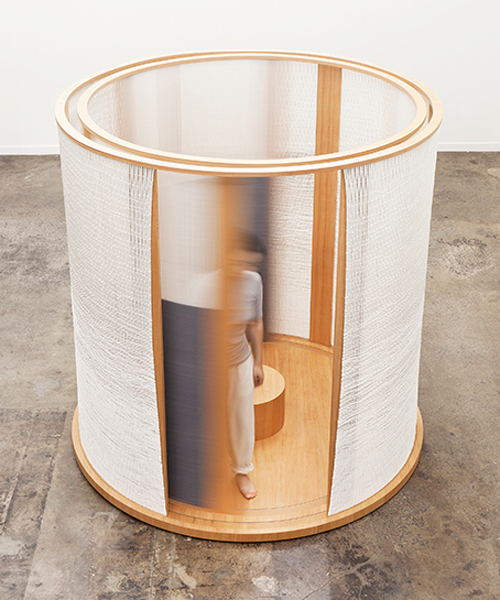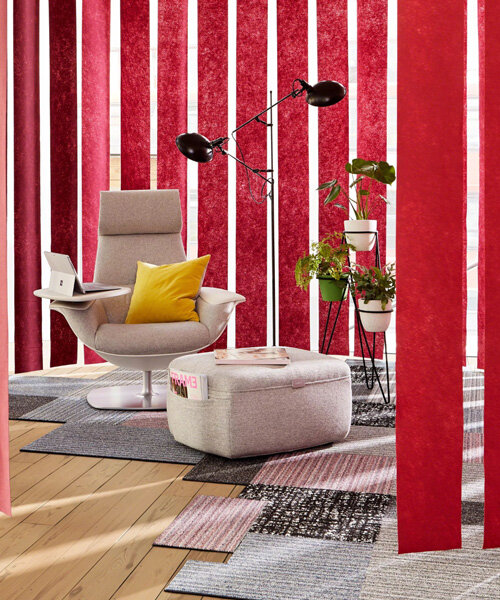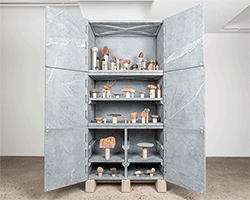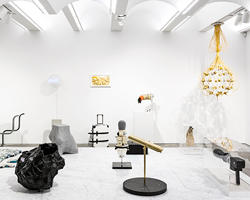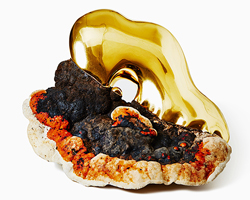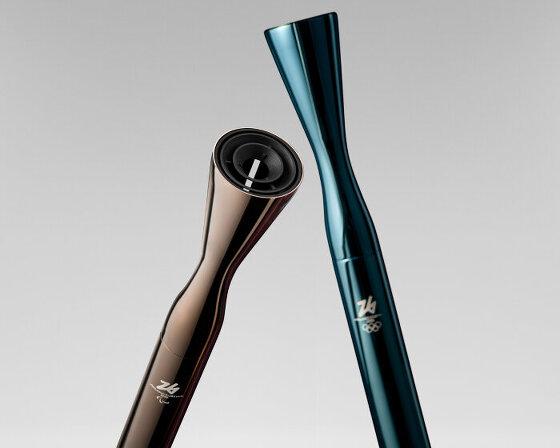mimi jung’s modern-day tea house envelops entrants within woven revolving walls
all images courtesy of mimi jung
focusing on the power of solace and introspection, designer mimi jung has realized a modern interpretation of a tea house that meets the needs of contemporary life, while acknowledging its religious and cultural associations. as a private meditation room, the piece offers the user a space for deep contemplation, reflection and ideation. users shift the tea house’s woven, semi-permeable revolving walls, stepping from the outside to the chamber’s hidden, isolated interior expanse. built from poly cords, aluminum and douglas fir, the need to physically push and pull the house’s concentric walls emphasizes the tension between polar opposites — internal and external experience — whose existence depends on their contrast with one another. within the shifting structure, a low wooden table positioned at the core of the space invites the occupant to sit in solitude and create a ritual of their own.
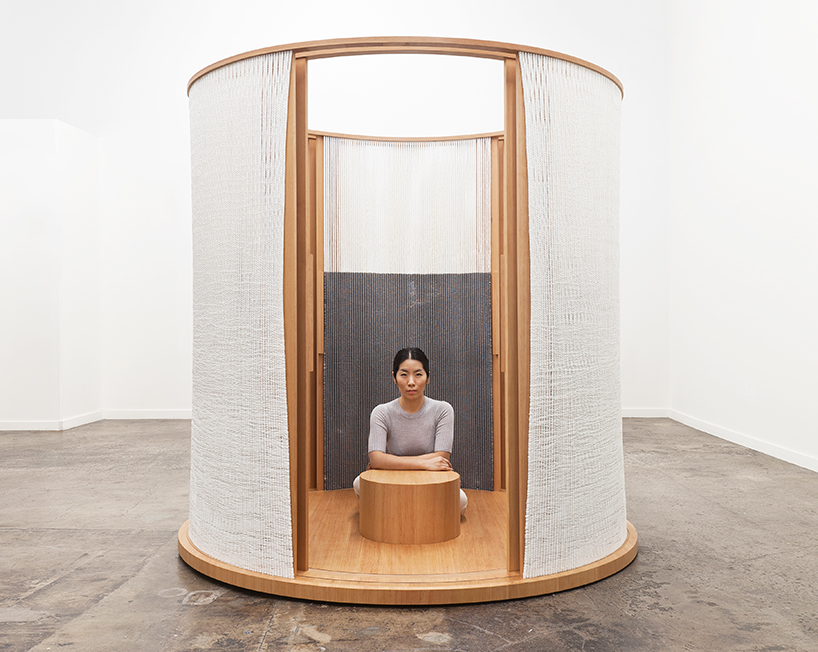
the ‘tea house’ focuses on the power of solace and introspection
the work forms part of the exhibition ‘progressland’ at chamber gallery: chapter two of collection #2, curated by filmmaker and photographer andrew zuckerman. the showcase — on from now until august 2016 — surveys a selection of designed objects that bring nature closer to the living environment, particularly focusing on the intersection between nature and progress through the themes of exploration, pioneering, and innovation.
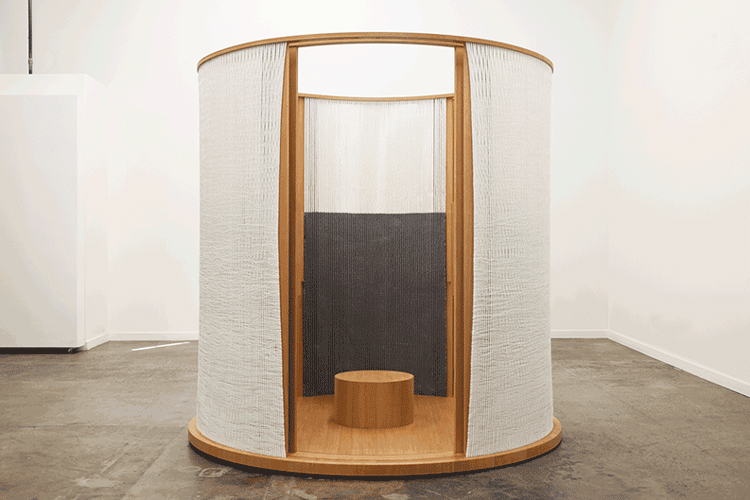
users shift the tea house’s woven, semi-permeable revolving walls
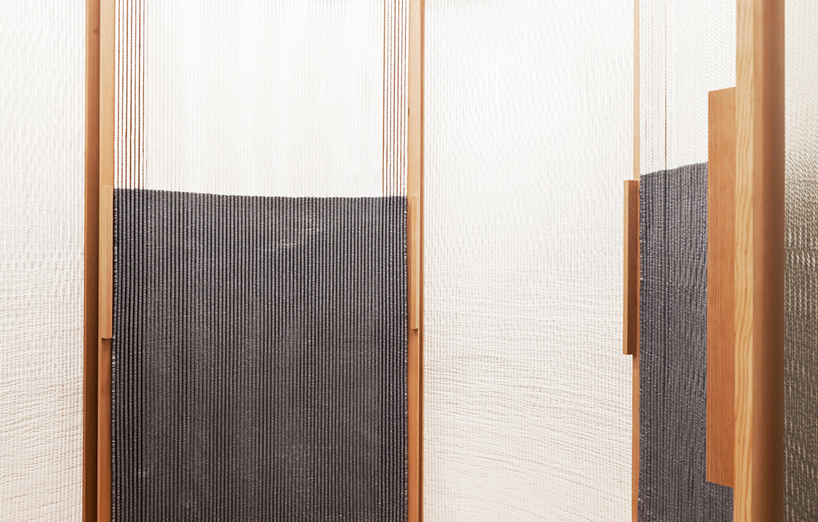
the installation is built from poly cords, aluminum and douglas fir
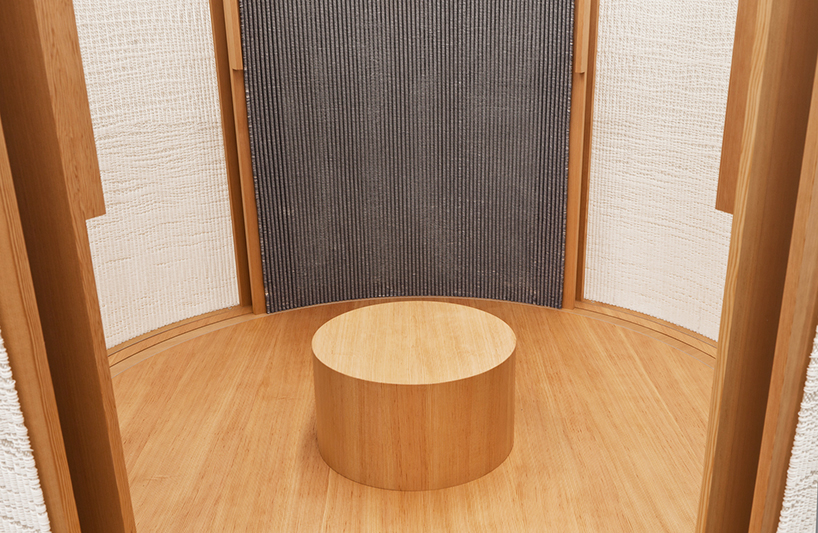
a low wooden table at the core of the space invites occupants to sit in solitude
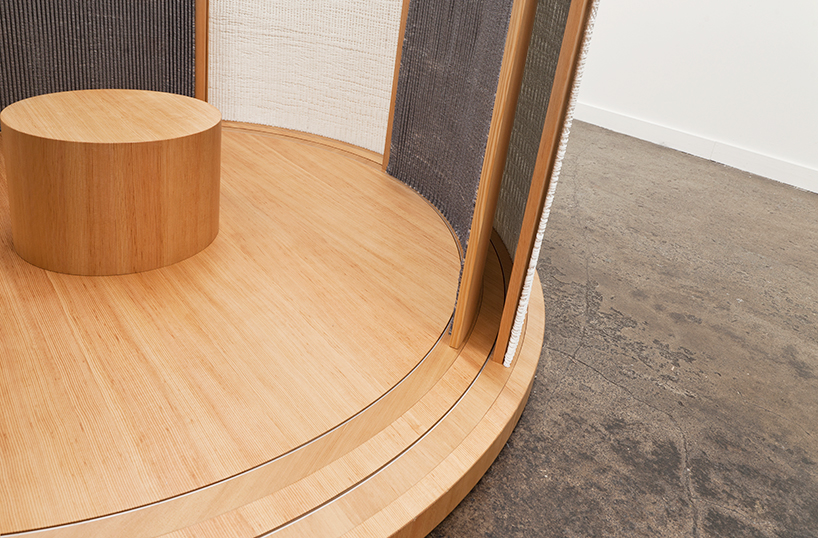
as a private meditation room, the piece offers the user a space for deep contemplation
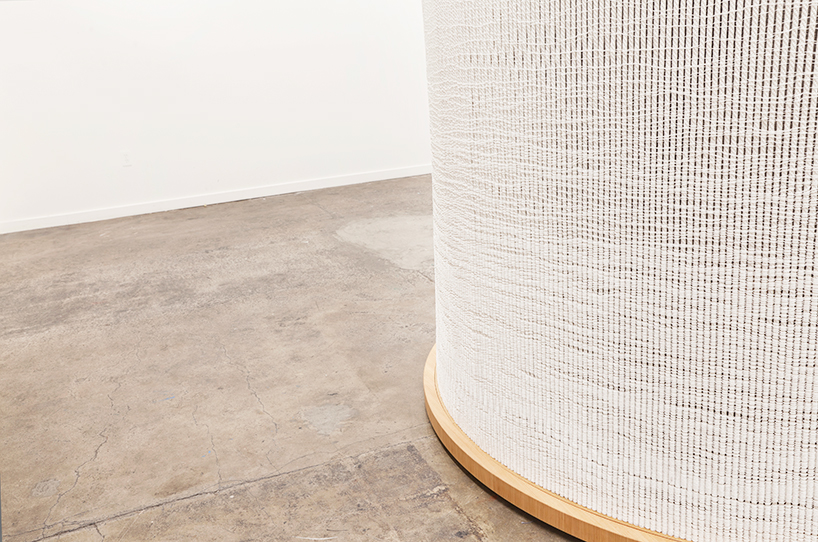
the need to physically push and pull its concentric walls emphasizes the tension between polar opposites
